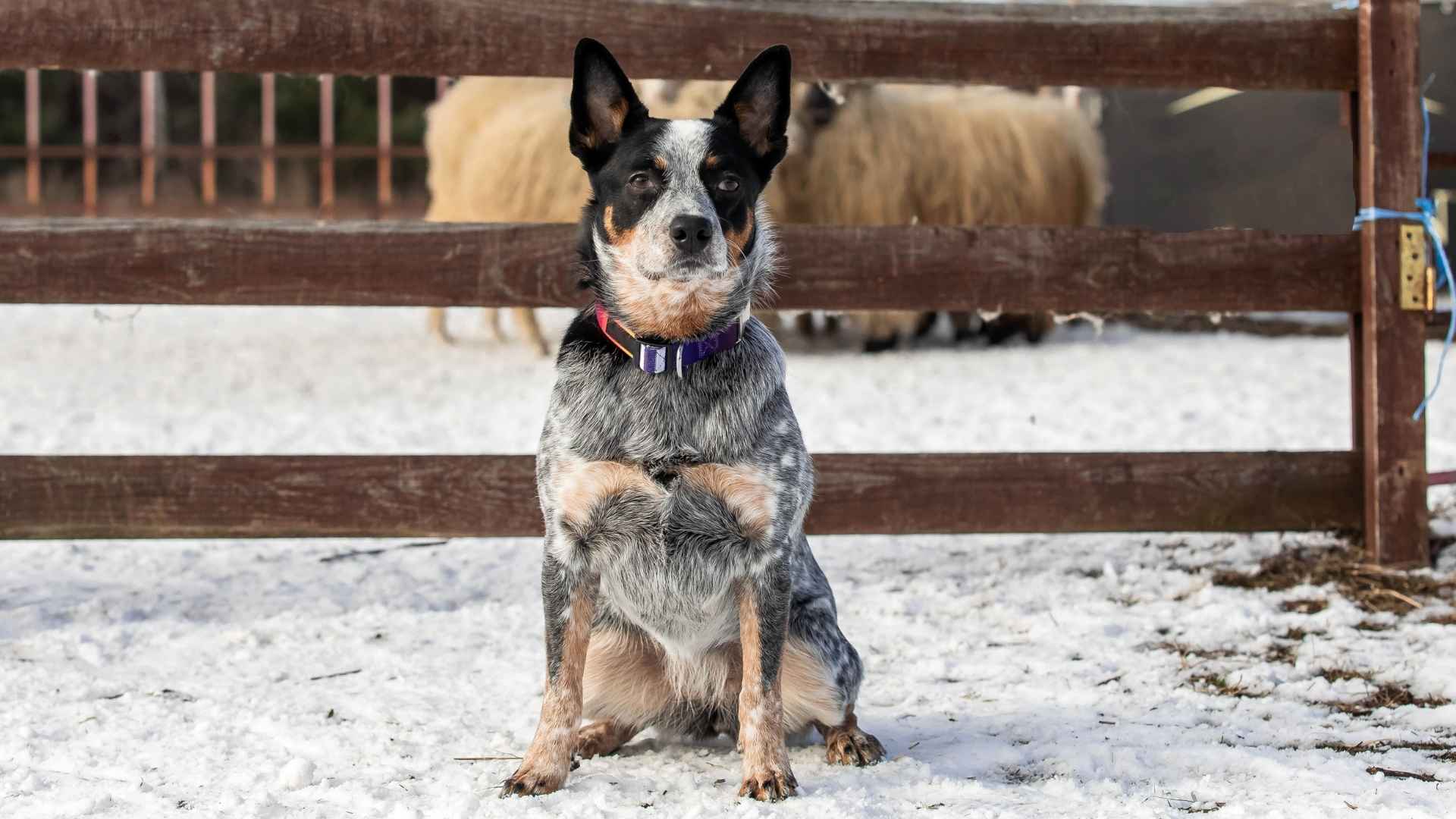From misty mountains to wide-open plains, herding dogs have been helping humans manage livestock for centuries, and they’re still some of the hardest-working, most loyal companions you’ll find today. These intelligent pups aren’t just skilled at moving cattle, sheep, and even chickens. They thrive on having a job to do and love being part of the action.
Did you know that herding breeds aren’t just great on the farm? They also shine in search and rescue, therapy, and service work thanks to their sharp instincts, agility, and deep connection with people.
So, whether you’re a farmer looking for a reliable helper or simply someone who admires these energetic, smart, and devoted breeds, herding dogs have a lot to offer. You don’t need to live on a farm to appreciate their charm—they make fantastic family pets too, always ready to play, protect, and be by your side.
Ready to meet the stars of the herding world? Let’s take a closer look at 7 amazing herding dog breeds that could be your next best friend—or your best farmhand.
Dog Breeds That Herd Livestock
1. Beauceron
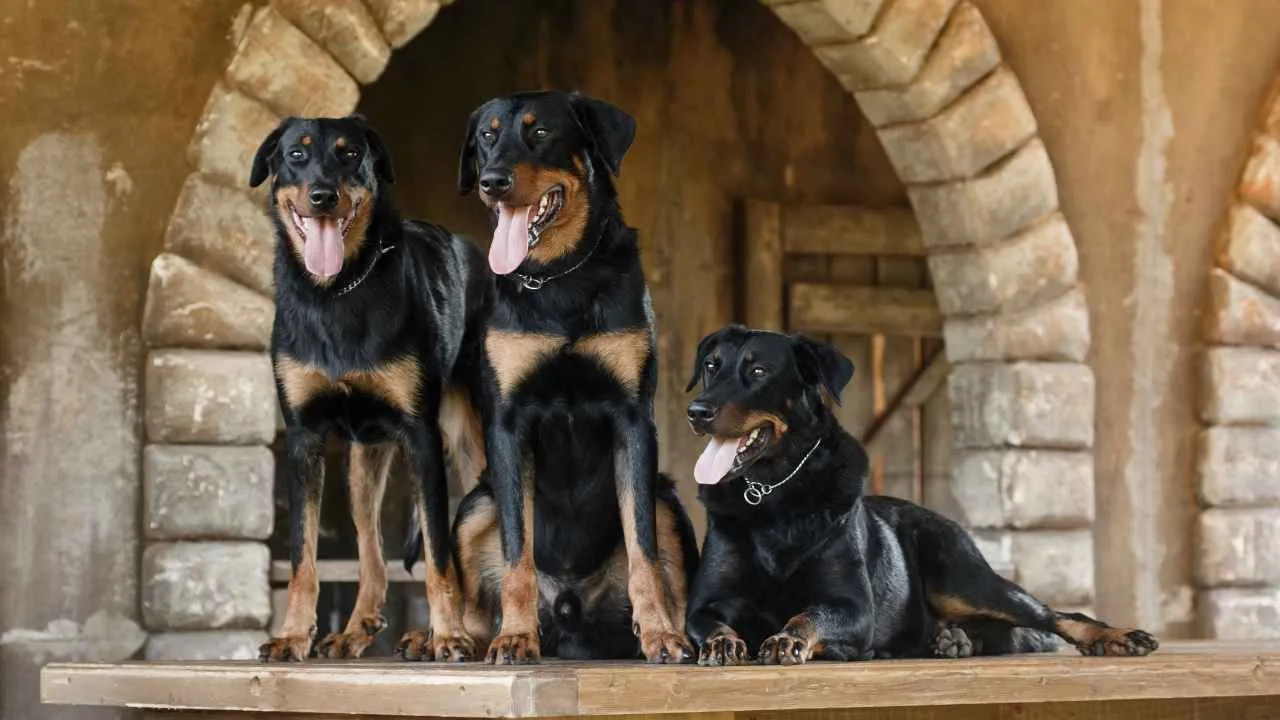
|
Height |
25.5-27.5 inches (male) 24-26.5 inches (female) |
|
Weight |
70-110 pounds |
|
Life Expectancy |
10-12 years |
|
Energy Levels |
Very Energetic |
The Beauceron is a powerful and intelligent herding dog that originally worked on farms in central France, helping protect and guide sheep. But this breed has proven to be much more than just a farmhand. Beaucerons also served as military dogs during World War I, showing their bravery and loyalty in challenging situations.
When it comes to herding instincts, the Beauceron has a unique approach: instead of getting up close to the flock, it prefers to keep a wide distance to avoid startling the animals. This thoughtful strategy shows off the breed’s smart and steady nature.
Though serious in nature, the Beauceron is deeply devoted and makes an excellent watchdog and guard dog, always ready to protect livestock, property, and loved ones. Because of their dominant and confident temperament, they require consistent leadership. However, when raised with patience and positive reinforcement, they become loyal, obedient, and loving companions.
Beaucerons are also adaptable and can live indoors or outdoors, though they prefer having space to roam. WebMD mentions that one unique trait of the Beauceron is its double dewclaws—extra toes on each rear leg that look like thumbs. It’s a quirky but distinct feature that sets this breed apart!
2. German Shepherd
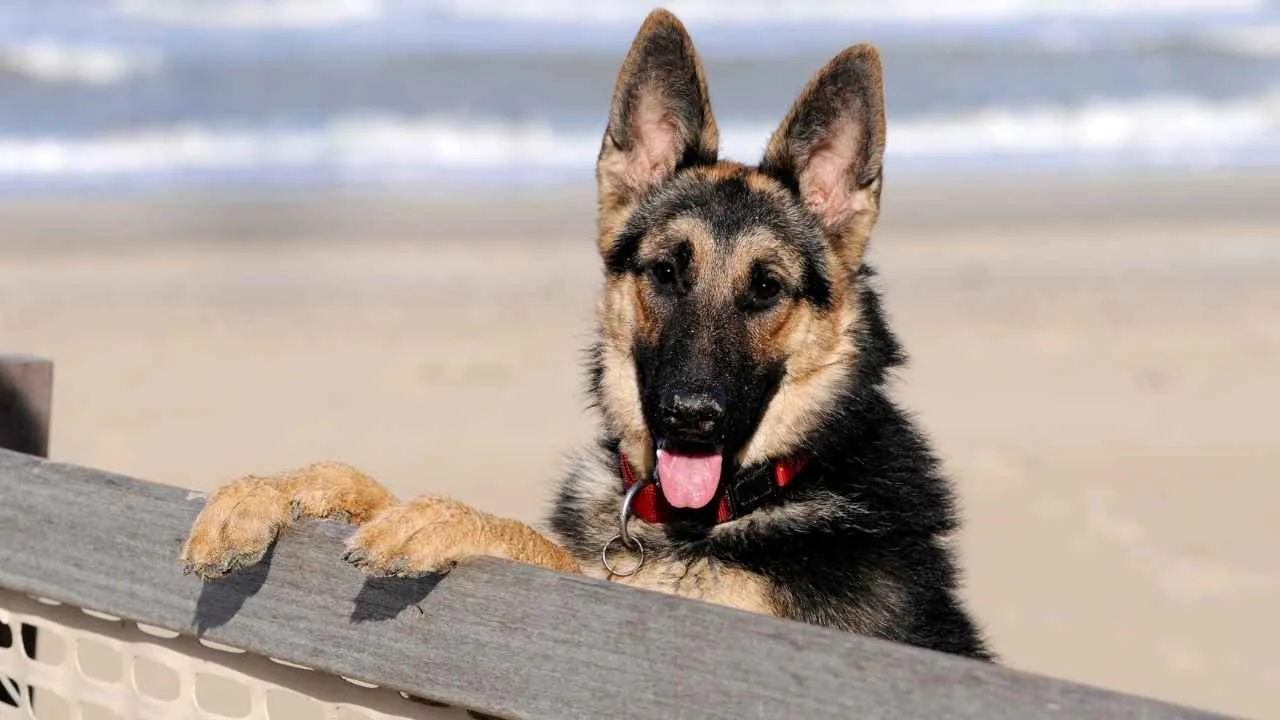
|
Height |
22-26 inches |
|
Weight |
50-90 pounds |
|
Life Expectancy |
7-10 years |
|
Energy Levels |
High |
When most people hear “shepherd dog,” the German Shepherd is likely the first breed that comes to mind—and for good reason. Originally bred in Germany to herd livestock and control large flocks of sheep, these dogs were experts at guiding animals through small grazing areas and keeping them out of unfenced crop fields.
Unlike livestock guardian dogs, which protect herds by seeing them as part of their pack, herding breeds like the German Shepherd rely on their herding instincts. They use their focus and drive to gather and move livestock like cattle or sheep without harming them. Thanks to proper training, they know how to guide animals forward efficiently without treating them as prey.
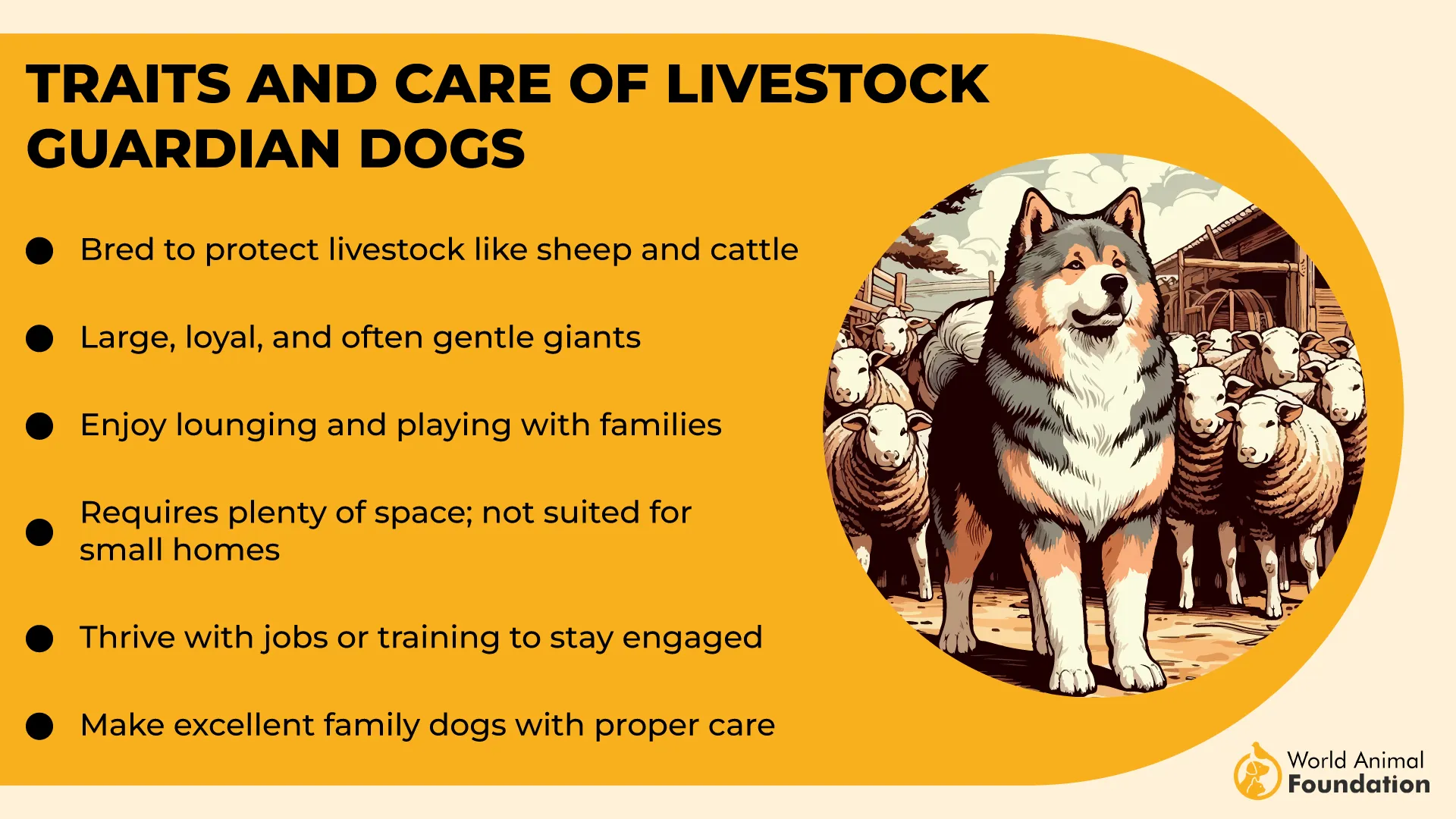
Over time, their talents have made them much more than just farm dogs. Today, they’re some of the most trusted working dogs in the world, serving in police and military roles, doing search and rescue, acting as service dogs, and participating in dog sports and herding trials. But they also shine at home, where their loyalty, confidence, and protective nature make them fantastic family dogs!
3. Briard
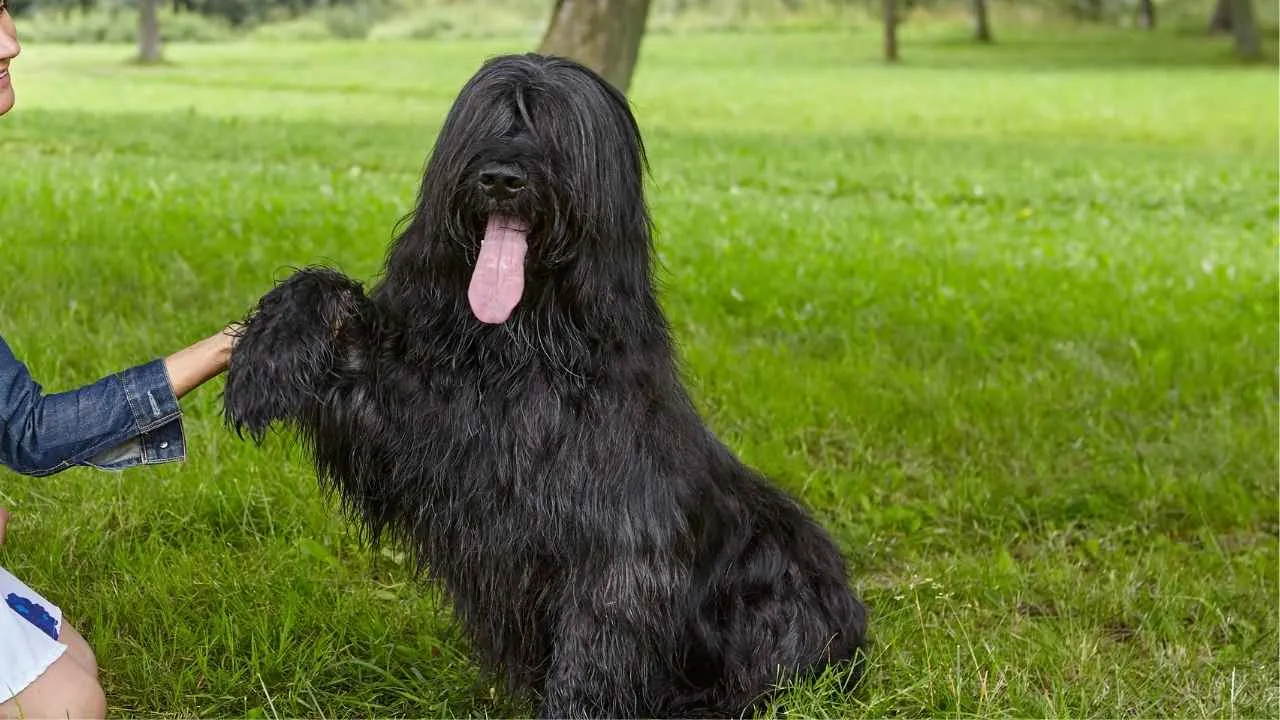
|
Height |
22-27 inches |
|
Weight |
48-97 pounds |
|
Life Expectancy |
10-12 years |
|
Energy Levels |
High |
The Briard is a beautiful and bold herding dog breed known for both herding and guarding livestock. It has been a trusted farm dog for centuries. In fact, they were so reliable in the field that they even served in both World Wars as search and rescue dogs and guard dogs for the French military.
As the American Kennel Club describes in the official breed description, the Briard moves like “quicksilver,” able to make sharp turns and sudden stops. This is exactly what’s needed when working with large flocks of sheep or other livestock. Their energetic, driving dog nature makes them excellent at navigating tough terrain and moving animals forward smoothly.
But the Briard isn’t all business. They are also known for being loyal, affectionate, and deeply bonded with their families.
While they do well in households with children, they often form a particularly close connection with one person only. Like many herding breeds, they have a natural instinct to look after their “flock,” which includes kids and other animals in the home.
4. Shetland Sheepdog
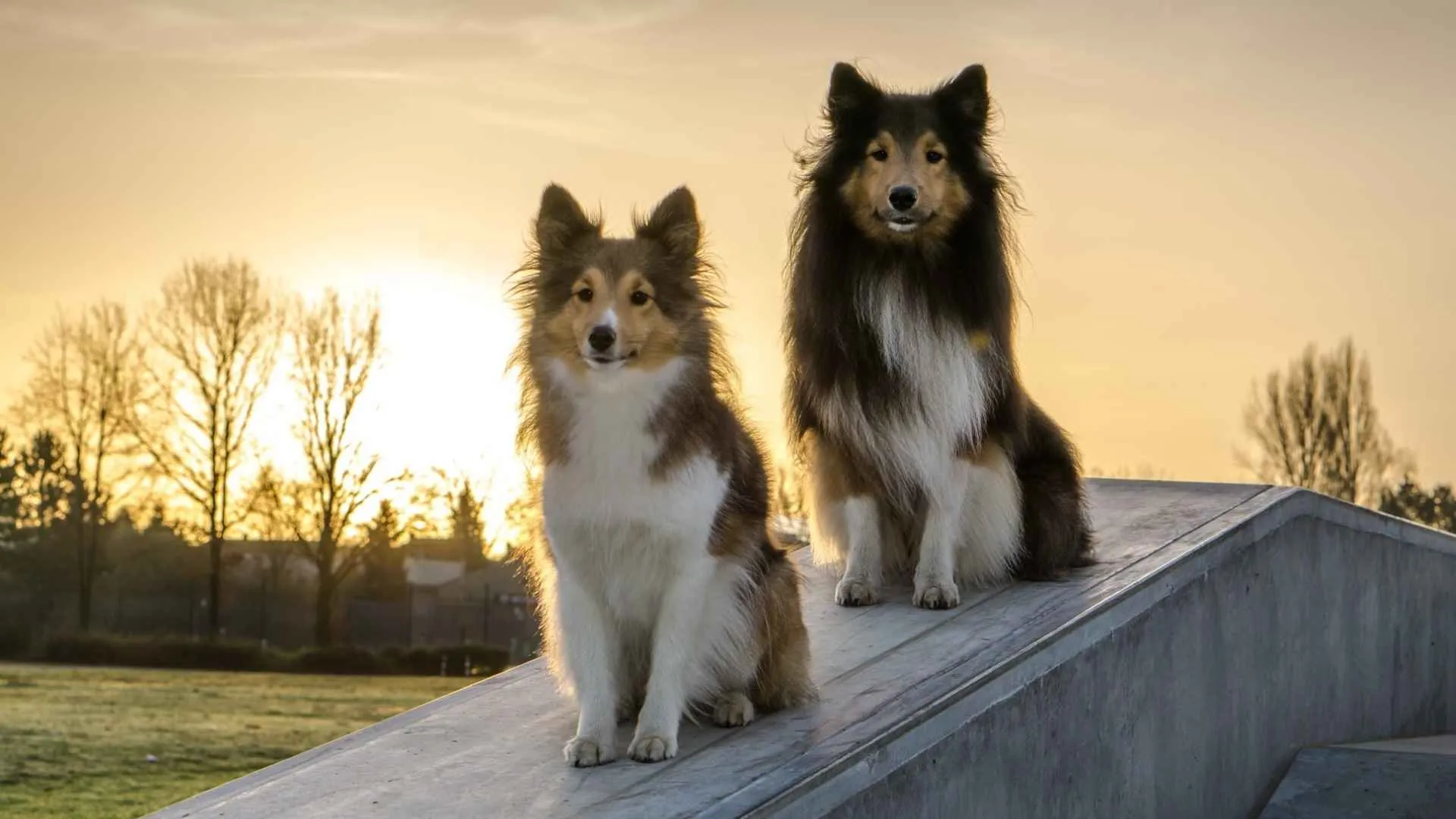
|
Height |
13-16 inches |
|
Weight |
15-25 pounds |
|
Life Expectancy |
12-14 years |
|
Energy Levels |
High |
The Shetland Sheepdog, or Sheltie for short, may look like a miniature Collie, and that’s no coincidence—they were originally bred from smaller Collies to create a compact but capable herding dog.
Originating from the rugged Shetland Islands of Scotland, Shelties were used to herd sheep and protect small flocks from wild animals in tough weather and tight grazing spaces.
Shelties are sturdy, agile, and incredibly intelligent. As part of the herding group, they’re natural workers who love having a job and thrive when given plenty of mental stimulation and daily activity. These high-energy dogs can easily keep up with, and often outlast, even the most energetic kids.
At home, the Sheltie is loyal and deeply affectionate with its family. Though they can be reserved or even a little aloof with strangers, Shelties form strong bonds with the people they know and trust.
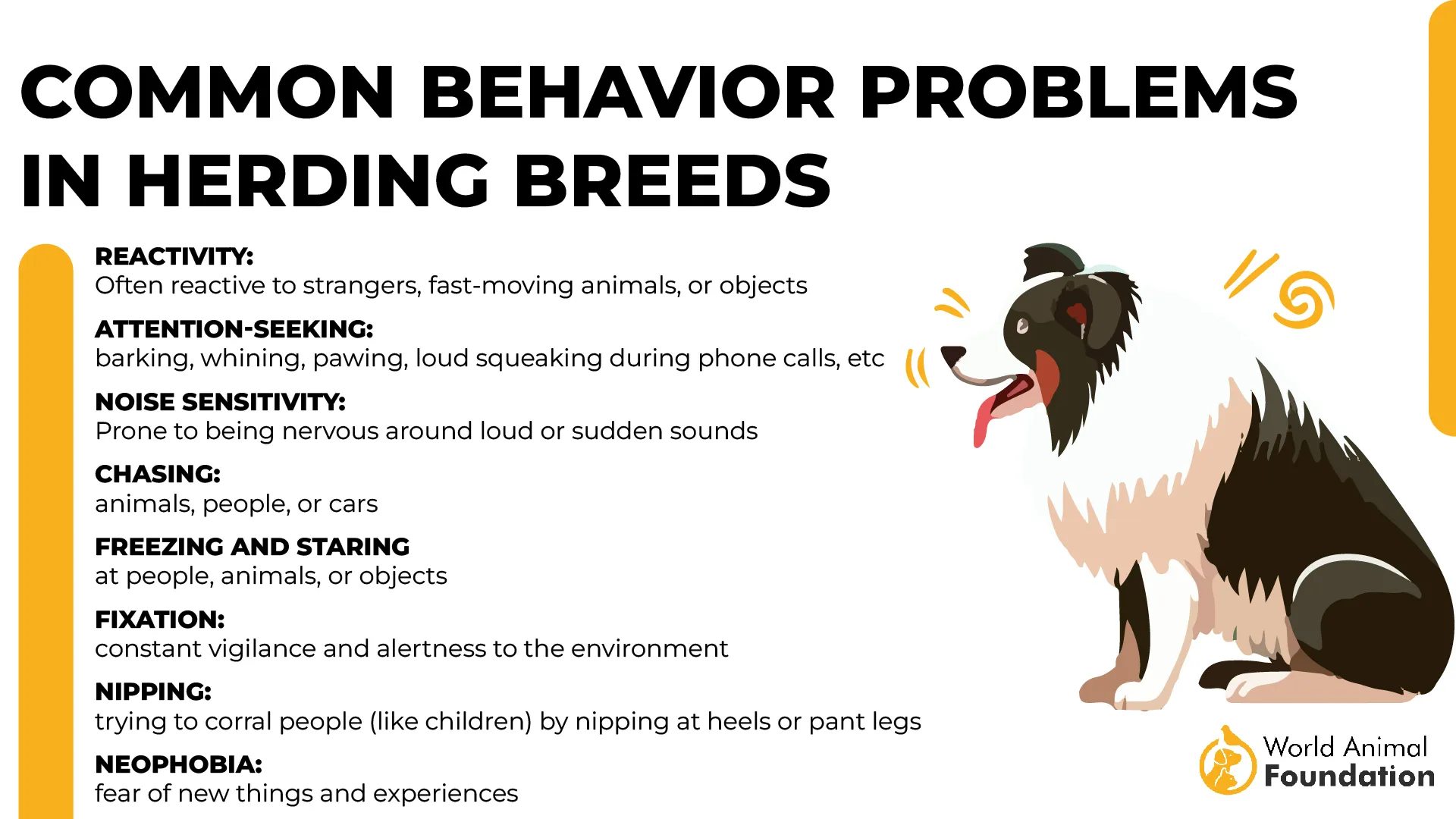
Their herding instincts can show up in playful ways. They might try to herd other animals, children, or even moving objects. And when they get excited? You’ll often see them barking, spinning ‘like a top’, or even bouncing around!
5. Icelandic Sheepdog
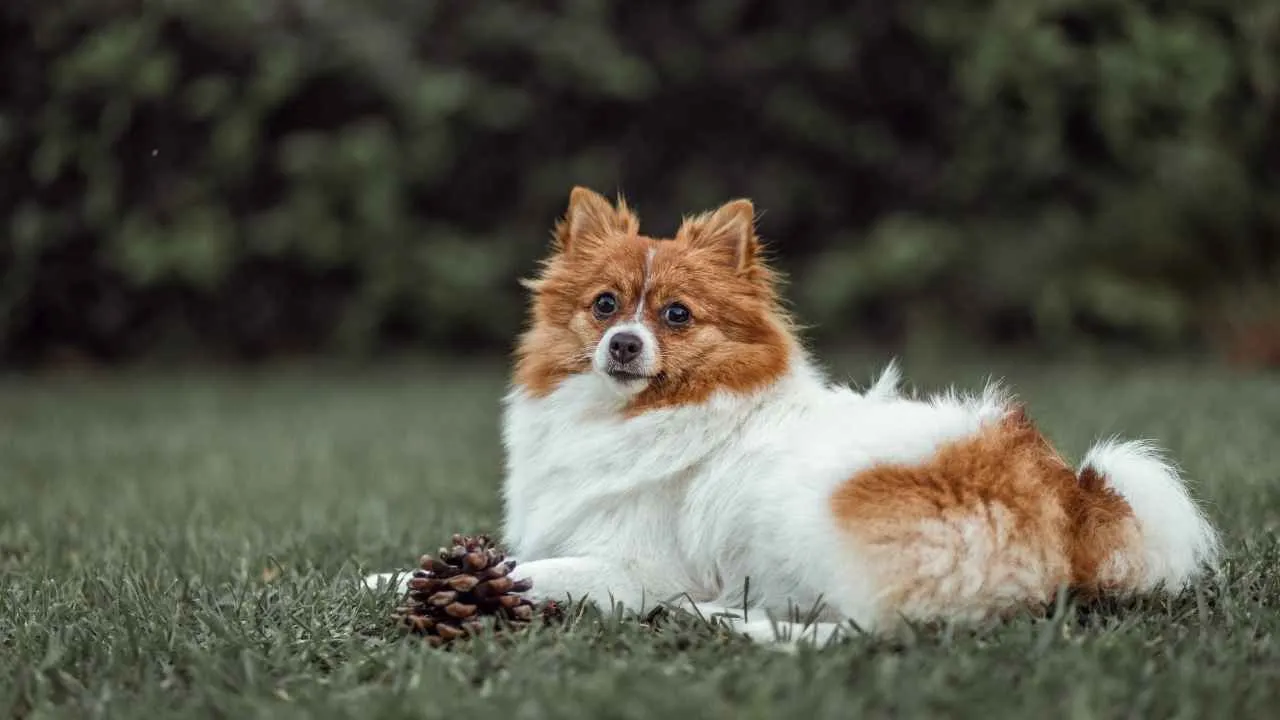
|
Height |
17-18 inches |
|
Weight |
25-30 pounds |
|
Life Expectancy |
12-14 years |
|
Energy Levels |
High |
The Icelandic Sheepdog is a cheerful, energetic, and devoted herding dog breed with roots as old as Iceland itself. Brought to the island by early settlers, these dogs were bred to herd livestock—especially sheep—in tough, mountainous terrain. Each autumn, they helped bring herds down from the hills, often working on their own without direct human guidance.
Unlike many other herding breeds, Icelandic Sheepdogs rely heavily on instinct rather than following commands. They’re also incredibly agile and sturdy, making them excellent ranch hands, farm dogs, and even companions in dog sports.
Visually, this spitz-type dog has a charming fox-like face, upright ears, and a bushy tail that curls over its back. With a rectangular build and a double coat, it’s built to handle cold climates and rough ground. That is ideal for herding sheep or protecting livestock in the challenging Icelandic landscape.
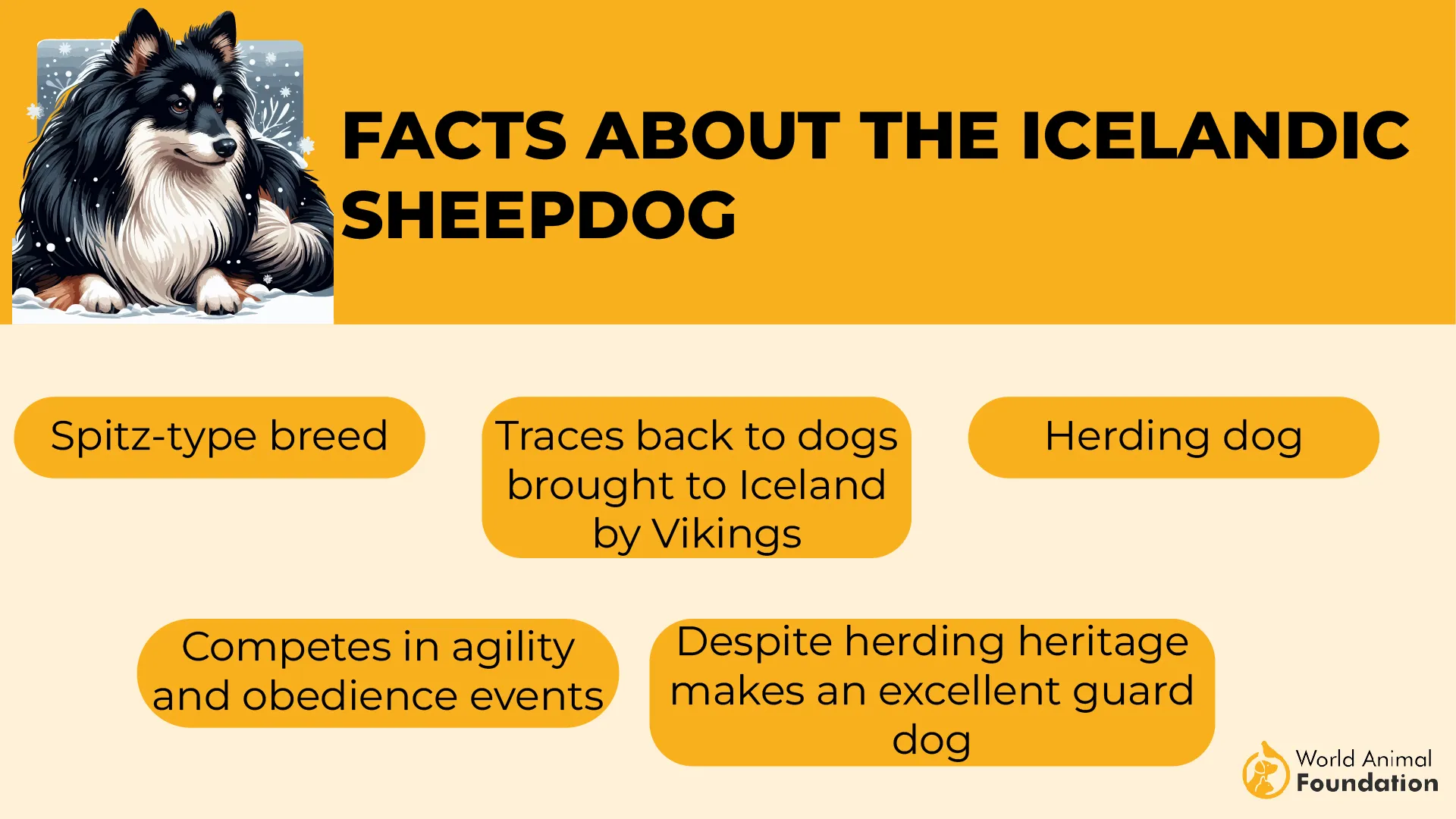
This breed nearly disappeared in the 1800s and early 1900s, but thanks to dedicated breed enthusiasts, the Icelandic Sheepdog was saved from extinction. Today, it’s still relatively rare but no longer endangered.
6. Old English Sheepdog
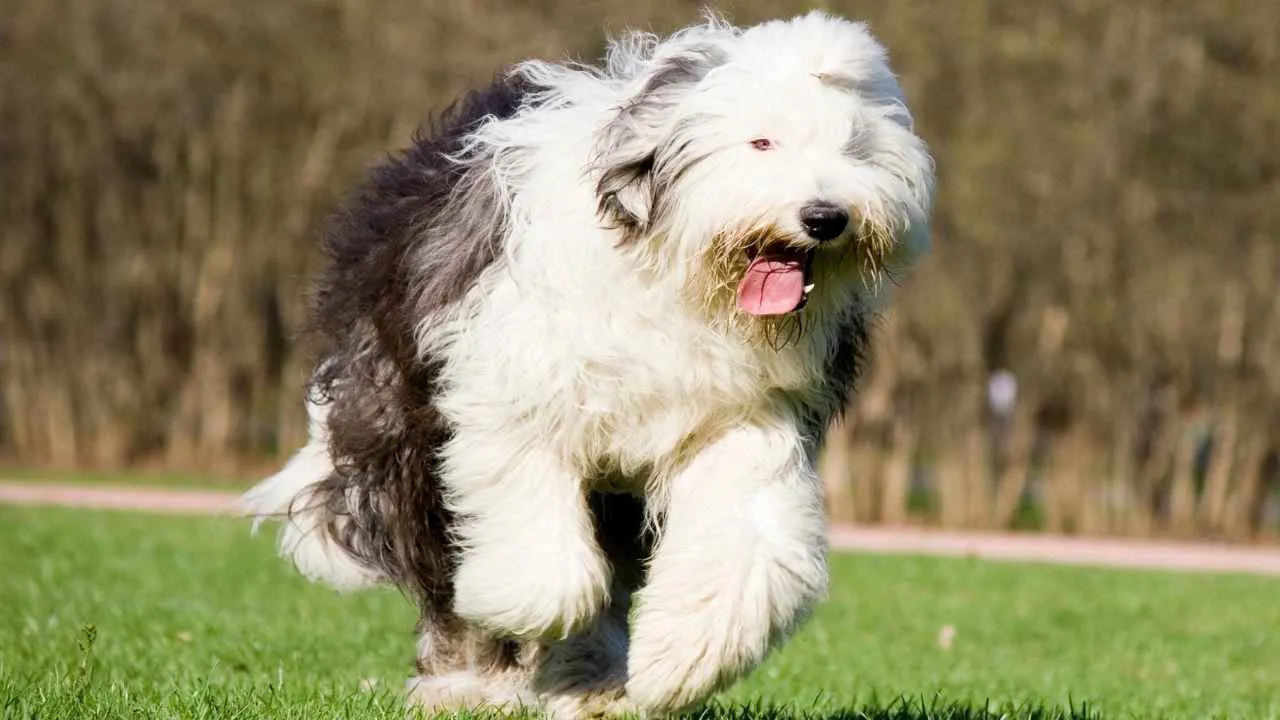
|
Height |
21 inches and above |
|
Weight |
60-100 pounds |
|
Life Expectancy |
10-12 years |
|
Energy Levels |
Medium |
The Old English Sheepdog is more than just a big, fluffy face. This iconic sheep dog is a strong, smart, and spirited worker bred to drive cattle and sheep from pastures to markets. These dogs weren’t just herding cattle. They were true drovers, guiding animals over long distances and standing guard against predators.
And here’s the best part! Their thick, shaggy coat wasn’t just for show. Back in the day, shepherds would shear their dogs annually and use the wool-like clippings to spin yarn for clothing. Talk about a multi-purpose farm dog!
Their bark is also something special. The American Kennel Club says that their bark has a unique “pot-casse” sound, kind of like two pots clanging together. It’s loud, distinctive, and part of what makes them such great watchdogs with strong protective instincts.
Here’s the good part: These dogs are incredibly loyal to their families. They may be big, but they’re total softies. They’ll often try to herd small children, following them from room to room to make sure their little “flock” stays together. Exactly what you’d expect from a breed built to protect livestock.
7. Australian Cattle Dog
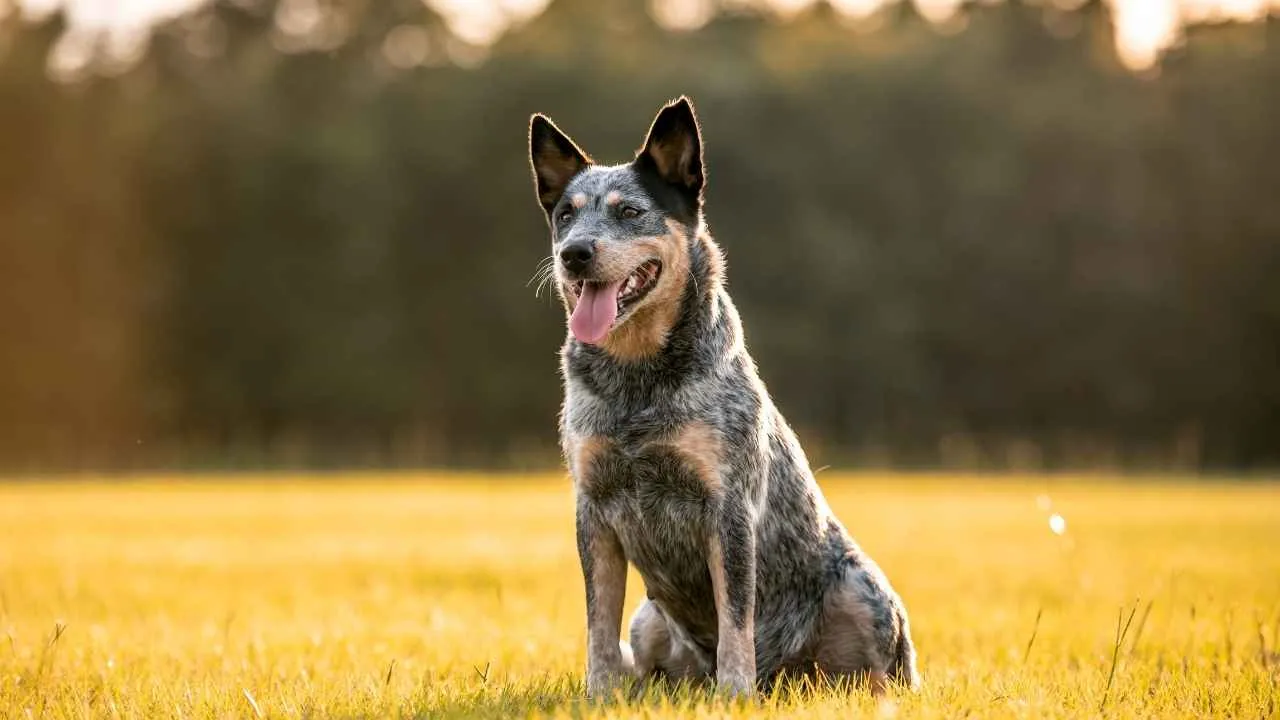
|
Height |
17-20 inches |
|
Weight |
35-50 pounds |
|
Life Expectancy |
12-16 years |
|
Energy Levels |
High |
The Australian Cattle Dog is a true-blue (or red!) outback hero. Selectively bred in 19th-century Australia to handle tough cattle herding jobs across long, rugged distances, this working dog has strength, stamina, and brains in spades. Exactly what you need when moving stubborn livestock across hot, dry pastures.
But wait, there’s more! These dogs come in two eye-catching color patterns: blue speckle and red speckle. That’s where the nicknames Blue Heeler and Red Heeler come from. It refers to their signature move of nipping at the heels of cattle to get them moving. It’s all part of their natural herding style.
Here’s the good part: these pooches are tremendously intelligent and eager to work. Their boundless energy, paired with fierce loyalty, makes them wonderful livestock dogs and great companions.
Descended partly from the wild dingo, these dogs are highly protective and bond deeply with their humans. They’ll guard their people and property with unwavering devotion. Sounds crazy, right? A compact dog that can move a herd of cows and still watch over your backyard like a pro.
Conclusion
Herding dogs are driven, intelligent, and deeply loyal—traits that make many dogs in this group more than just workers. With the right training, space, and purpose, they become excellent companions, eager to be part of the action and part of the family.
Apart from the breeds mentioned above, some other dogs also herd cattle and sheep. These include the Border Collie, Pembroke Welsh Corgi, Australian Shepherd, Belgian Malinois, and Belgian Shepherd.
These dogs aren’t content to sit on the sidelines. They want to think, move, and contribute. If you’re ready for a relationship built on trust, energy, and shared purpose, a herding dog might be exactly what you’ve been looking for.


